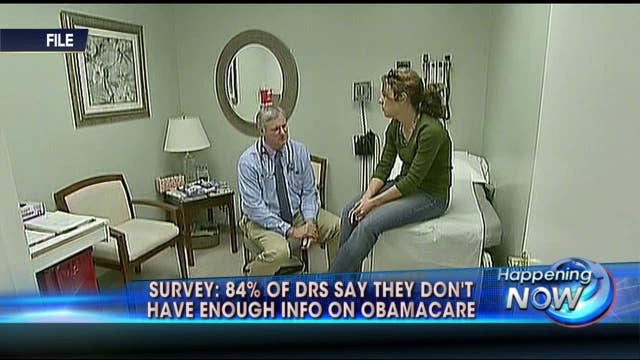Doctors Aren’t so Clear Over ObamaCare Changes
Many Americans are still trying to sort out the requirements the Affordable Care Act, but they aren’t the only ones scratching their heads.
Doctors are also a confused about the mandates included in the president’s signature legislation.
According to a new poll from QuantiaMD, 84% of practicing physicians say they don’t have enough information about the reform to be a reliable resource for their patients.
QuantiaMD, a collaboration learning platform for physicians, polled 1,265 doctors from across the country.
The poll also finds that 81% of physicians feel they don’t have enough information on the ACA to understand its impact on their practice or to comply with its requirements. Under the ACA, every American has to have insurance by the end of open enrollment period, on April 1, or they will face a fine of $95 or 1% of their annual income, for failing to comply.
What’s more, 35% of surveyed doctors say there aren’t reliable sources of information out there on the ACA, and 75% say they would use an HHS-produced fact sheet with patients if they didn’t have a better resource available.
Mike Paskavitz, editor-in-chief at Quantia, says the company has been polling physicians since 2012, and that many feel they have been “left out of the reform process.”
“As the ACA has rolled out and been more real at the point-of-care, doctors are increasingly saying to themselves, and each other, ‘this is crazy and lacks practical reality,’” he says. “They feel they have been left out of the conversation. Some doctors don’t even understand what the health exchanges are.”
The reform law is sweeping and many of the ideas are too broad, he says. Patients have seen many of the issues firsthand, especially when trying to use their new insurance on the first of the year and finding out that their plans may not have been activated properly.
The law has been changed or delayed more than 10 times since open enrollment kicked off on Oct. 1. To date, more than 3 million Americans have enrolled in plans via both state and federal exchanges. But more than 6 million have lost coverage since the launch of the law because their old plans did not meet the new requirements, including covering 10 essential health benefits—everything from prescription drug care to ambulatory services.
“I think the doctors feel like they are on their own, because they haven’t received anything,” he says. “The number-one-thing they feel they need is more reliable sources.”
